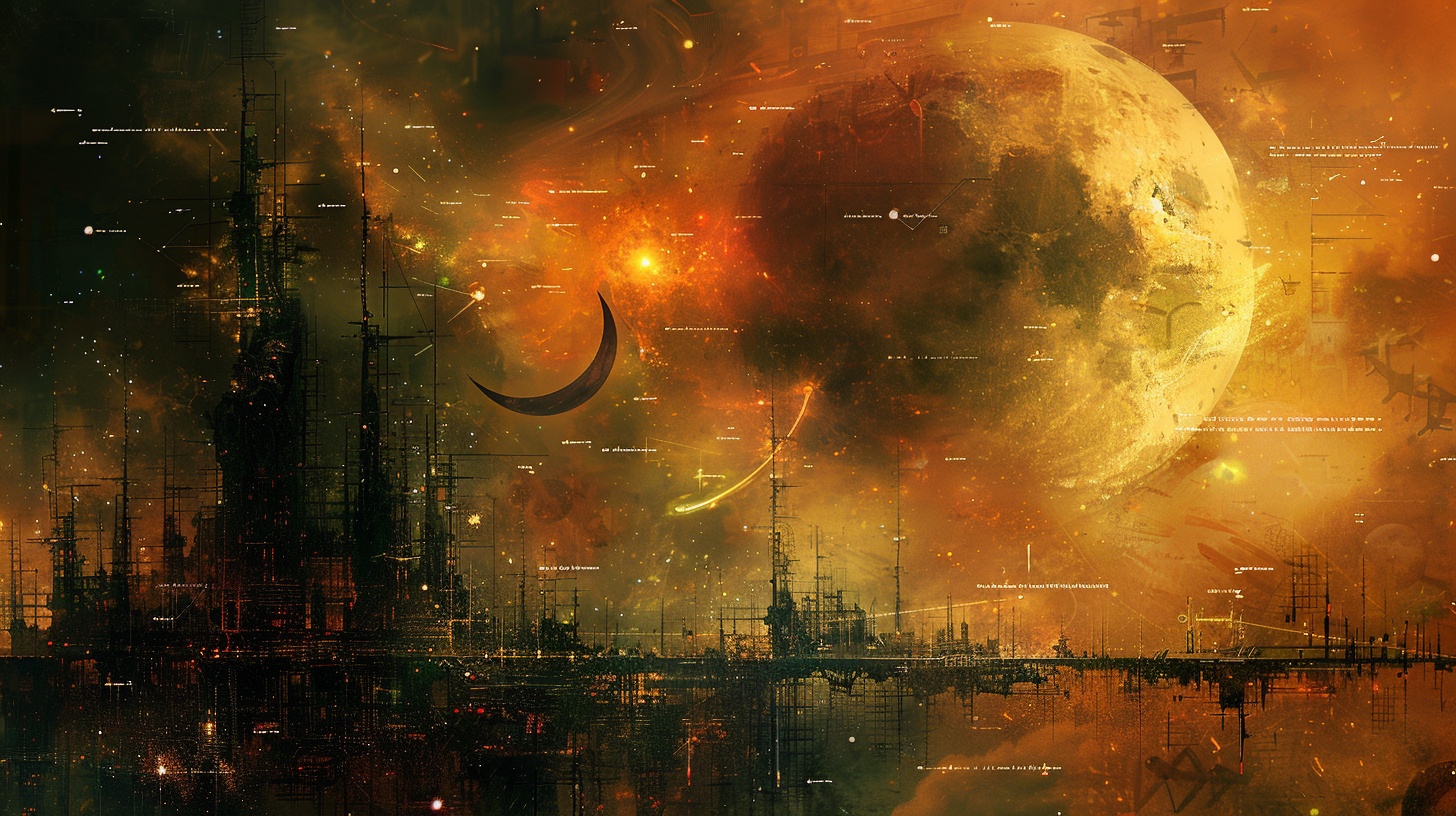
Creating the Creedverse, my alternate history steampunk western universe, has been an exhilarating journey. There’s good reason people enjoy creating fictional worlds, even if they aren’t authors or game masters. It’s rewarding, and it’s a blast.
World building in science fiction isn’t merely about setting a stage for characters to perform; it’s about birthing a milieu grows with vivid characters, events, and cultures. It needs history, technology, governance, customs, and fictional people to bring it to life. It must be alive with possibility.
In this post, I’ll share insights into the world-building process, emphasizing the significance of structured frameworks, detailed record-keeping, and leveraging modern tools like WorldAnvil, which has been invaluable in organizing the Creedverse.
Structured Frameworks for Depth and Consistency

When I first started really filling out the Creedverse–and this was in the early stages of writing my novel, Bodacious Creed: a Steampunk Zombie Western–I signed up for a site where I could make a personal wiki. The problem was, the site had no built-in framework for world building. It felt little different from creating a website back in the 90s, when we had to code each html page by hand.
Then, WorldAnvil came along, a site made for world building with the framework to back it up. By that, I mean categories, robust templates for each type of entry, easy linking of articles and so on, and a lot of other features. This made my job so much easier, and I quickly signed up and have loved it every since. (In fact, I’ve become friends with the wonderful creators of the site, and they’ve even featured me on their podcast.)
Applying their framework to each entry in the Creedverse ensures both depth and consistency. It’s like scaffolding that keeps my fictional world solid, navigable, and consistent. The templates remind me of important details that might otherwise slip my mind. I don’t have to fill in all the details for everything, but when something is important, I’ll know to fill it in.
Some of the templates include the following:
- Characters: For each character, I create a comprehensive profile that covers not only their physical description and personality but also their backstory, motivations, relationships, and evolution throughout the timeline. This helps ensure characters are multidimensional and integral to the world.
- Locations: Every location I use the Creedverse, from the streets of San Francisco and Santa Cruz to the wilderness, is well-detailed. I consider geography, climate, culture, and the location’s significance to the narrative, creating a vivid backdrop that influences and is influenced by the characters. When I need a new setting, I can add it easily and make sure it fits in with what I’ve already detailed.
- Technologies, Artifacts, and Other Items: The steampunk element of the Creedverse requires a focus on inventiveness. Each piece of technology I come up with, from steam-powered automatons to advanced medical devices, is documented, including its function, origin, societal impact, and limitations. I want to make sure that the technological aspects of the Creedverse are both imaginative and grounded in the story’s reality.
- Governmental Structures: So far, I’ve dealt only with the U.S. government, as the Creedverse stories have all been set in the United States. Governmental structures, from local law enforcement to overarching government bodies, are outlined to provide a clear understanding of the world’s political dynamics, laws, and leaders, as well as the challenges and conflicts they face. As with many other aspects of my fictional world, I research how things were in the real world. While I often stick closely to it, the Creedverse is an alternate history, so some things differ, but I need to know how and why.
The Importance of Detailed Record-Keeping

With a universe as rich and complex as the Creedverse (this may seem like bragging, but throughout 2023 I added a lot to my world, and the total content of my WorldAnvil site is close to 400,000 words… a lot of information!), keeping detailed records is essential. This helps in maintaining internal consistency and provides me with a reference to use when I’m writing. Some elements I include in entries include:
- Historical background
- Cultural practices and beliefs
- Economic structures
- Technological progress
- Political landscapes
While not every detail directly influences the narrative, this comprehensive knowledge base allows for a world that feels lived-in and real.
Harnessing the Power of WorldAnvil
In the digital age, tools like WorldAnvil have revolutionized the process of worldbuilding. WorldAnvil, in particular, offers a suite of features that cater to the needs of creators like myself, enabling the organization, categorization, and linking of every aspect of the Creedverse.
- Organization: WorldAnvil’s platform allows me to easily navigate between characters, locations, technologies, and governance structures, making the process of referencing and cross-referencing seamless. After I’ve written an entry, I can have the site auto-link to other articles.
- Templates: The platform’s structured forms for various worldbuilding elements prompt me to consider facets of my universe I might otherwise overlook, encouraging thoroughness and creativity.
- Privacy and Sharing: While the bulk of my notes remain private for my reference, I have the option to share selected information with my readers. This not only enriches their experience but also invites them into the world I’ve created, fostering a deeper connection and engagement with the narrative.
You can read about some of the main characters and lot more.
I invite fellow creators and readers alike to explore the Creedverse on WorldAnvil, where I’ve made select information available to enhance the storytelling experience and offer a glimpse into the intricate process of world building. You can read about some of the main characters and much more.
Expanding Horizons Through Worldbuilding

I’d go so far as to say that creating the Creedverse has expanded my imagination, which was vivid to begin with! It’s required meticulous planning, using innovative tools, and a desire to see this world I birthded right out of history keep growing. Building a universe with its own set of rules, histories, and cultures is both daunting and exhilarating. It requires a balance between creativity and discipline. My hope is that this ensures it resonantes with my audience. Through structured frameworks, detailed record-keeping, and the capabilities offered by WorldAnvil, the Creedverse has grown into a living entity that continues to evolve and inspire me. Worldbuilding, at its core, is the heartbeat of science fiction and fantasy. It helps authors and other creators stories, games, and so on with life. It transforms mere ideas into universes that captivate, challenge, and transport us beyond the confines of our reality.
To get started world building yourself, I couldn’t recommend WorldAnvil more highly. Full disclosure: I am an affiliate—why wouldn’t I be?—but it’s totally worth using the free version of the site until you decide you want to take it further, and then, subscriptions are very reasonable.
And, if you sign up there, follow me on my personal WorldAnvil page!
If you’d like to dive into the fiction of the Creedverse, check the sidebar links. Happy reading!
“Nobody believes me when I say that my long book is an attempt to create a world in which a form of language agreeable to my personal aesthetic might seem real. But it is true.” ~